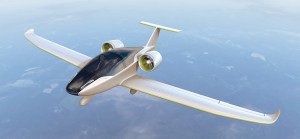Why The Electric Motor Powered Engine Is the Next Big Thing in the Aviation Industry
The e-Genius marks the begining of a new generation of jets
In the French Alps, an aircraft set seven new world records. The two-seater plane climbed to an altitude of more than 20,000 feet in less than two minutes and reached speeds of up to 142 miles per hour. The airplane also flew for 300 miles nonstop.
These numbers might not sound impressive, but considering the plane did not burn any fuel or emit any emissions, this is not a minor feat. The aircraft instead used an electric motor powered by a single battery. The plane was christened the e-Genius and was designed by engineers at the University of Stuttgart.
Furthermore, the e-Genius proved to be more remarkable since the cost of flying was reduced. During the 62 mile stretch of its momentous flight, the e-Genius used approximately 25 kilowatts of electricity for a total cost of $3 according to its pilot, Mr. Klaus Ohlmann. This means the e-Genius only consumed a fifth of the power used by a similar fuel powered two-seater plane.
The e-Genius is a symbol of things to come
In the next 20 years, you will probably be able to purchase a ticket for a flight on an electric aircraft that is capable of carrying 100 people or more. Our current batteries allow us to travel a range of 400 kilometers using the most advanced cars or planes.
In five years the distance and battery capacities will double, and in 10 years scientists believe these numbers will increase tenfold. Technological developments in electric powered flight will not only reduce flying costs for passengers, but they will also transform how the aeronautics industry affects the global climate.
Aircrafts account for around 500 million tons of carbon dioxide discharged into the world’s atmosphere annually representing a substantial increase in global warming. Electric planes, therefore, substitute petrochemical consumption with cleaner and more efficient battery-powered energy.
In the last 150 years, carbon dioxide in the atmosphere has increased by 35%, and humanity went from being an earth-bound species to flying 3 billion passengers yearly. This, in turn, had a major impact on the earth’s carbon footprint. For instance when an individual flies from New York to London and back the journey produces roughly the same amounts of greenhouse gas emissions as heating a residential house all year long.
The International Civil Aviation Organization (ICAO) forecasts that by 2050 airplane-generated emissions are going to triple. Governments have recognized these dangers and have started addressing the skyrocketing volumes of greenhouse gases by passing new industry guidelines.
For example in 2012 the European Union executed a carbon-trading initiative among airlines which essentially created a marketplace for buying or selling allowances for carbon dioxide discharges. This was followed by the International Air Transport Association (IATA) calling for more countries to adopt this resolution. However incremental advances such as these are not enough to adequately mitigate the increasing carbon emissions by the flight industry.
To decrease carbon emissions, the very concept of fossil powered air crafts should evolve
Companies such as Raytheon, Airbus, Boeing and Safran S.A have revealed plans to modernize the airplane. At Boeing, engineers have developed the SUGAR Volt concept aircraft which uses both fuel and electricity to power flight similar to hybrid cars. On the other hand, Airbus recently publicized a battery powered plane called the E-Fan which the company hopes to start selling recreationally by 2017. In 20 years Airbus expects to sell this concept commercially. There is a lot at stake in the race to revolutionize the electric aircraft industry which is estimated to reach over $22 billion in the next ten years.
If the electric plane is to take off and be sold both commercially and on recreational markets, it requires improved batteries. Other industries have substituted outdated lead-acid batteries with lithium ion batteries which now power our cars, phones, and laptops. However, in order to be compatible with aviation needs, the next generation of batteries must deliver vast amounts of power while being simultaneously safer, lighter and smaller than lithium-ion batteries.
Private jet charter flights have never been easier. Zephyr Jets provides an ultimate luxury experience at the best price in the market. Call one of our specialized concierges for more info: 888-442-3131

